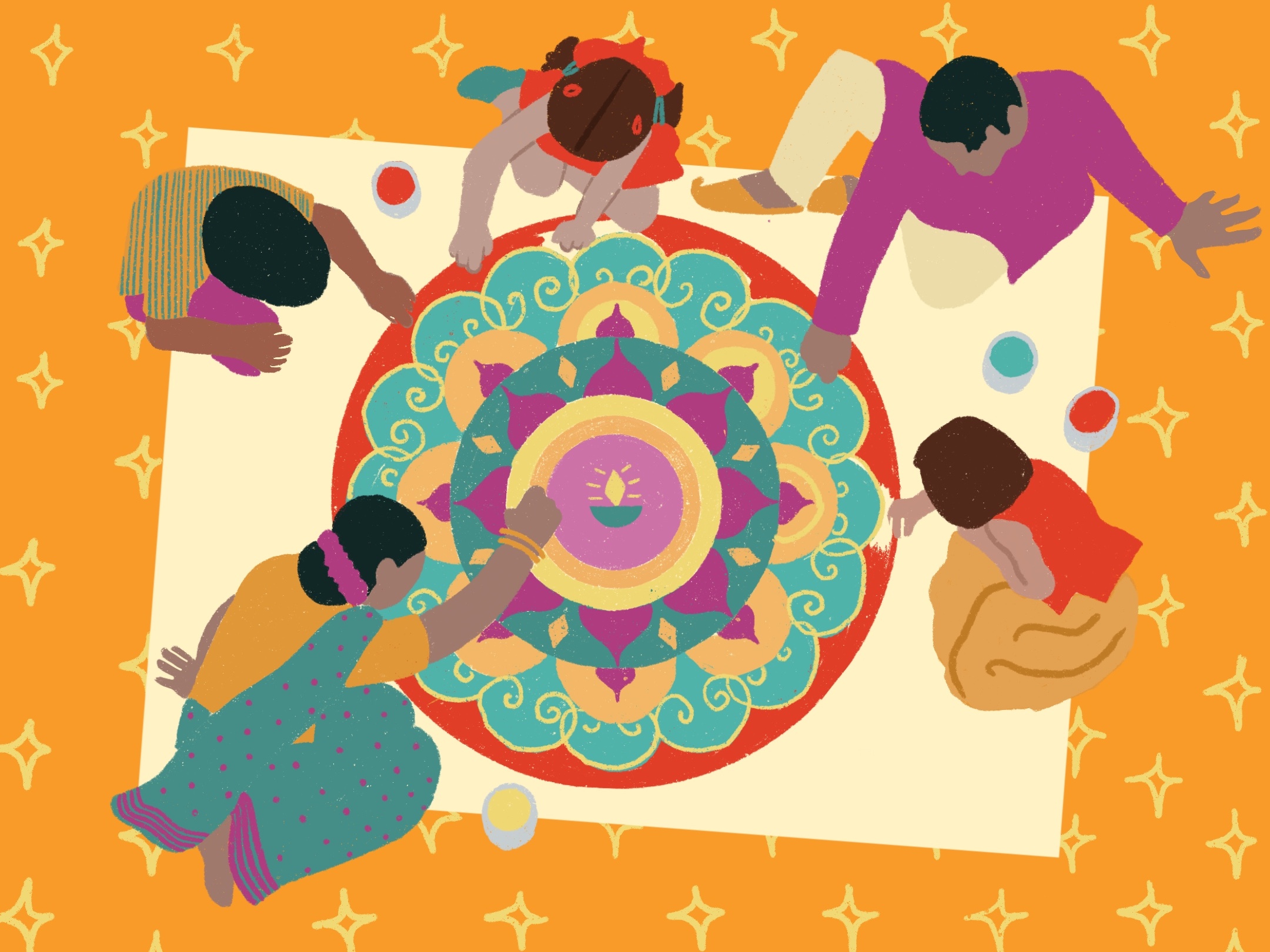
It seems somewhat ironic that Diwali, the ‘festival of lights’ falls on the darkest night of the darkest month in the “Hindu” calendar. The myths & stories for why that day is celebrated across regions in India differ, however, what remains as a dominant theme is a triumph of good over evil, light over darkness.
In the darkest of nights, our light shines the brightest
Diwali or Deepavali, in Sanskrit literally translates to “a row (avali) of lights(deep). Across the world, the day is celebrated with the lighting of ‘diyas’ (clay-made lamps) to illuminate the house, making ‘rangoli’ to decorate the entrance of our homes, family gatherings, prayers, feasts, rituals, joy and elation. It is the turning of a new chapter, the freshness of the new year.
The day itself is celebrated across different communities for different reasons. In the South, the people celebrate it as the day that Lord Krishna slayed Narakasura; in the West, it commends the day of repentance of Goddess Kali; Jains celebrate the attainment of nirvana of Lord Mahavira and the Sikhs as the day Guru Hargobind was released from his wrongful imprisonment from the Mughal emperor Aurangzeb.
The most popular and ancient myth is the celebration of the day that prince Ram, his wife Sita and brother Laxman, return to the kingdom of Ayodhya from their 14-year exile in the forest. For those unfamiliar with the ‘Ramayana’(the journey of Ram), it is an ancient mythological epic that follows the story of Ram who was committed to exile from his homeland for 14 years. His stepbrother Laxman and his wife Sita dutifully followed him into the life of a hermit. They spent many years in the forest, in peace, until Sita’s beauty was noticed by the demon king Ravana. Ravana succeeded in capturing Sita and took her back to Lanka. A long struggle and battle ensued with the monkey God's help, Hanuman, to slay Ravana, save Sita and reunite her with her husband, just in time to return to the kingdom of Ayodhya for them to take their rightful place as king and queen. The day of their return (Diwali) is marked by the people of Ayodhya with a row of diyas to welcome them home. It is the first day of a new and prosperous era.
All of these stories highlight the significance of how auspicious this time of year is.
The week around Diwali is celebrated by different communities across India highlighting the significance of how auspicious this time of year is. Some of the key days around Diwali are:
- Vasubaras, the day one celebrates fertility, divinity, abundance, and nature through the worship of cows.
- Dhantrayodashi or Dhanteras - the celebration of wealth. It is the birthday of Dhanvantri, the father of Ayurveda which signifies that our real wealth is health and well-being. It is the celebration of immortality and knowledge.
- The day of Diwali is to worship Goddess Laxmi or Maa Kali for good fortune and the clearing of bad omens from the house and family.
- Two days after Diwali is Bhai Dhooj, a celebration of siblings and the eternal unconditional bond of love they share between them.
- Part of the rituals of the week is to clean the house and allow for the good spirits to enter and share your good fortune with the less fortunate through seva (service).
Diwali is a grand celebration of love, gratitude, community, family and devotion. If you would like to pay homage to this significant time of year, you could start by “spring” cleaning your house! Spend time on each of the days contemplating and celebrating your relationships.
Spend the day of Diwali lighting a candle and meditating on its burning flame. Settle all grievances, forgive everyone who has once caused you pain, vow to start the new year on a fresh page and have a feast with the ones you love!